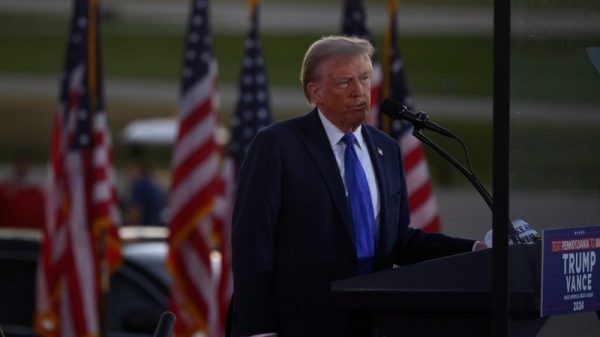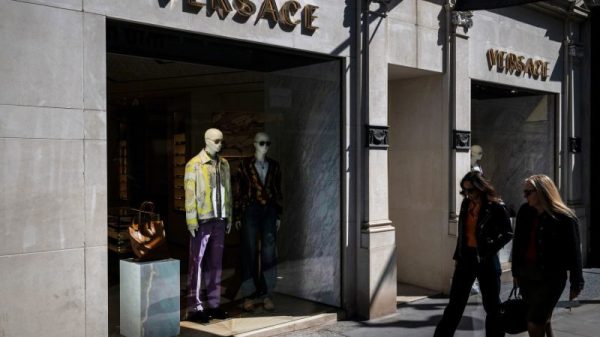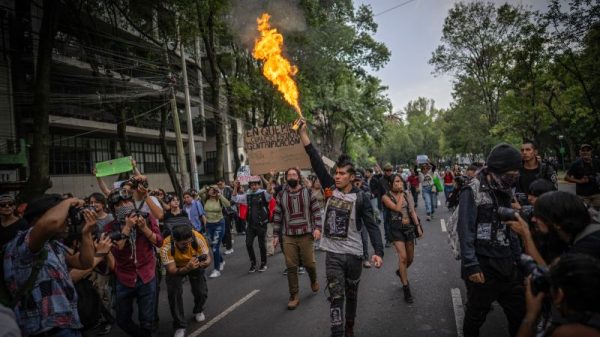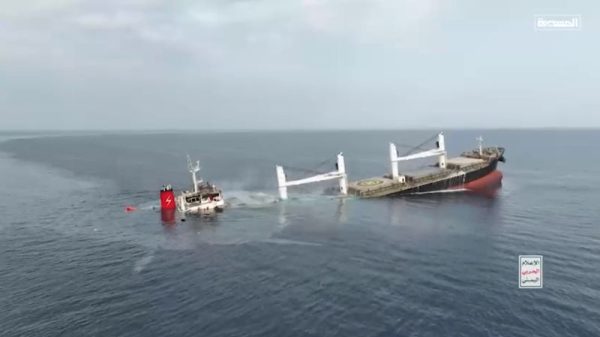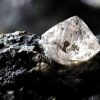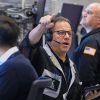New satellite images show what could be North Korea’s biggest warship ever – possibly more than double the size of anything in leader Kim Jong Un’s naval fleet.
Images taken by independent satellite providers Maxar Technologies and Planet Labs on April 6 show the ship under construction in the water at the Nampo shipyard on North Korea’s west coast, about 60 kilometers (37 miles) southwest of the capital Pyongyang.
Analysts say the pictures show ongoing construction of weapons and other internal systems of the ship, which is likely a guided-missile frigate (FFG) designed to carry missiles in vertical launch tubes for use against targets on land and sea.
“The FFG is approximately 140 meters (459 feet) long, making it the largest warship manufactured in North Korea,” an analysis by Joseph Bermudez Jr. and Jennifer Jun at the Center for Strategic and International Studies said.
For comparison, the US Navy’s Arleigh Burke-class destroyers are about 505 feet long and its under-construction Constellation-class frigates will be 496 feet long.
The existence of the warship is not a surprise.
The Kim regime has been engaged in a rapid modernization of its armed forces, developing a range of new weapons and testing intercontinental ballistic missiles that can reach almost anywhere in the United States.
It’s done that despite United Nations sanctions that have puts strict limits on its access to the materials and technology to develop those weapons.
But the closer ties with Russia since the beginning of the Ukraine war could be helping North Korea overcome that sanctions, analysts say.
Kim Duk-ki, a retired South Korean admiral, said he thinks Moscow may be providing the technology for the frigate’s missile systems.
Pictures of the vessel appeared in a report by state-run Korean Central Television released late last year on the ruling Workers’ Party’s end-of-year plenary session. The images showed leader Kim inspecting the ship’s construction.
The images shown in the KCTV video show the warship could have the kind of weaponry possessed by modern navies, including vertical launch cells that could be used to fire a variety of missiles.
Analysts also noted the ship seems to be set up to have phased-array radar, which can track threats and targets more quickly and accurately than previously displayed North Korean capabilities.
Despite those indications of advanced warfighting abilities, analysts urged caution in making assumptions.
The challenge of building warships
Almost any shipbuilder can get the hull and propulsion systems right, said Carl Schuster, a former US Navy captain and Hawaii-based analyst.
“However, modern warships represent an integration challenge of communications, electronics, weapons, and both electronic and acoustic sensor technologies” that is not so easily achieved, he said.
“Operating such a big military warship takes significant amount of budget. They not only have to build a warship, but make a team that would operate it, and it costs to operate it including the equipment and fuel. Also, one huge warship cannot go out on its own. So the question is, can North Korea afford the cost?” he said.
Kim, the retired South Korean admiral, was cautious on not underestimating what the final product may look like, especially its lethality.
“If North Korea equips the new frigate with the hypersonic ballistic missile it claimed to have successfully tested in January, that will cause a game changing impact in the regional security,” the former naval officer said.
“This ship’s construction is being delayed by the lack of the superstructure, sensor and weapons systems intended for installation,” he said.
North Korea’s aged fleet
North Korea’s navy has about 400 patrol combatants and 70 submarines, according to the most recent estimate from the US Defense Intelligence Agency (DIA) in a 2021 report.
Though that’s a large number of vessels, most of them are old and small.
Joseph Dempsey, an analyst at the International Institute for Strategic Studies, wrote in a January blog post that Pyongyang has only two principal surface combatants. Those Najin-class frigates – 1,600-ton warships dating to the early 1970s – are obsolete, he wrote.
The DIA report said the North Korean navy would largely be reduced to coastal defense in any conflict with South Korea or the United States, both of which have vastly superior naval forces.
But North Korean leader Kim has been pushing to modernize his naval fleet. It is also developing submarine-launched missiles and the subs to carry them.
In September, Kim inspected the site for a new naval port.
“Now that we are soon to possess large surface warships and submarines which cannot be anchored at the existing facilities for mooring warships, the construction of a naval base for running the latest large warships has become a pressing task,” he said at the time.
Yu Yong-won, a South Korean lawmaker, said the ship under construction at the Nampo yard is only one example of Kim trying to modernize his navy.
A nuclear-powered submarine is under construction at a shipyard in the North Korean port of Sinpo and another frigate or destroyer is in the works in Chongjin, Yu said.






